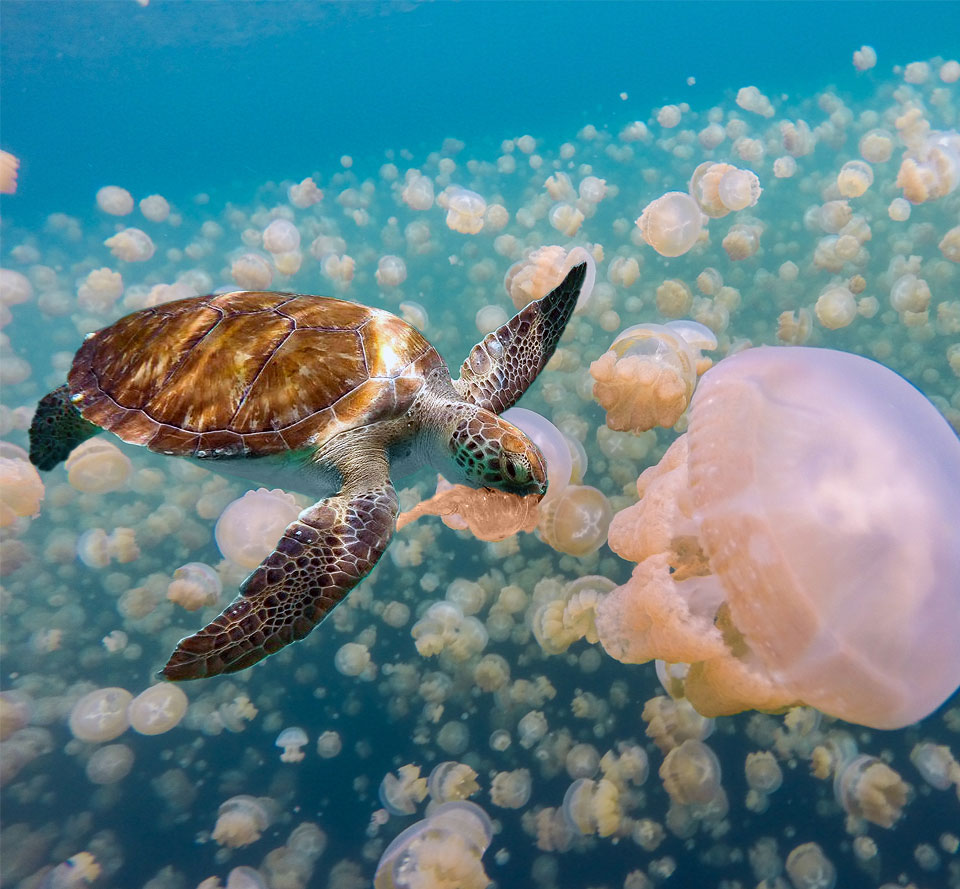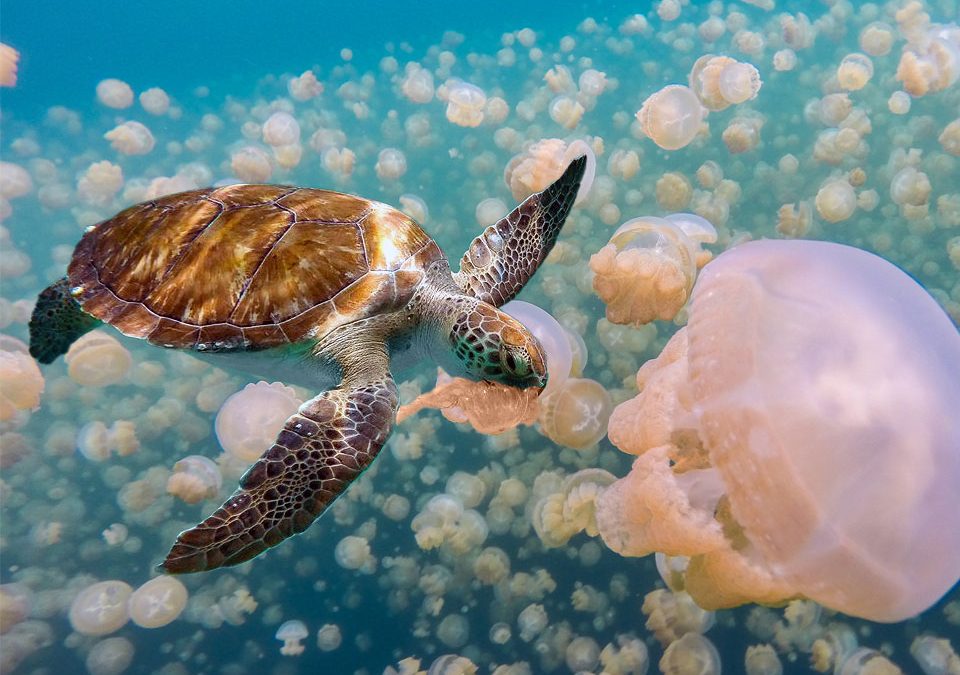Feeding Frenzy: A Deep Dive into Sea Turtles’ Culinary World and the Mysteries of Jellyfish Stings
Released: January 15th, 2024

Sea turtles exhibit a diverse range of eating habits depending on their species, with their diet evolving as they progress through different life stages. The primary diet of adult sea turtles typically consists of jellyfish, sea anemones, squid, and various species of sponges. Green sea turtles, for example, are renowned for their herbivorous tendencies, favoring seagrasses and algae. Loggerhead and leatherback sea turtles, on the other hand, are known to have a more varied diet, incorporating crustaceans, mollusks, and fish into their meals. Hawksbill sea turtles have a specialized diet, primarily feeding on sponges, which helps maintain the health of coral reefs by preventing sponges from outcompeting other reef organisms.
While sea turtles are generally adapted to cope with the stinging cells of jellyfish, there is evidence that some species, particularly the leatherback sea turtle, are immune to the sting due to their unique physiological adaptations. Leatherbacks possess a thick, leathery skin and lack the bony shell that other sea turtles have, making them less susceptible to the venomous tentacles of jellyfish. Other sea turtle species may still encounter challenges while consuming jellyfish, as the gelatinous nature of these creatures can make them difficult to handle. In some cases, sea turtles may accidentally ingest plastic bags, mistaking them for jellyfish, which poses a severe threat to their health.
Despite their evolutionary adaptations to consume jellyfish, the proliferation of plastic pollution in oceans poses a significant threat to sea turtles. Floating plastic bags in the water can resemble jellyfish, and ingestion of these materials can lead to intestinal blockages, malnutrition, and even death. Human activities, including improper waste disposal and the release of plastics into the oceans, contribute to this problem, highlighting the interconnectedness between human actions and the well-being of marine life.
Conservation efforts to protect sea turtles and their feeding habits involve not only addressing plastic pollution but also advocating for sustainable fishing practices to maintain the abundance of the marine life they depend on. Educational initiatives and awareness campaigns play a crucial role in fostering a greater understanding of the impact of human activities on sea turtles and promoting responsible behavior to ensure the survival of these ancient and charismatic marine creatures.

